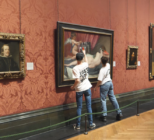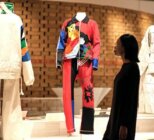The latest demonstration of Horniman Museum and Gardens’ commitment to promote environmental issues saw Nick Merriman, the organisation’s chief executive, plant a tree to mark Global Climate Week of Action. The ceremony, held in the grounds of the museum, sought to raise awareness of tree planting as a key solution to some of the global problems caused by climate change.
Merriman, back in July when the museum first declared a climate emergency, said the Horniman has “long been concerned with environmental issues, and the impact of human activity on our world”. This he attributed in no small part to it being the “only museum in London in which nature and culture can be viewed together”.

Declaring an ecological and climate emergency, the Horniman CEO added, represents a “consolidation of existing work and a commitment to renewed ambitions to reduce our own environmental and pollution footprint, increase biodiversity, and inspire others to do so”.
Conceding that the museum was “not yet as green as it could and should be”, Merriman said doing more both as individuals and an institution is core to its new environmental mission.
Earlier this month the Horniman announced that it would host the UK premiere of MELTDOWN: Visualizing Climate Change by Project Pressure in partnership with climate change charity Project Pressure.

The charity has commissioned artists to conduct expeditions documenting changes to the world’s glaciers since 2008, and MELTDOWN contains a variety of works from this series. This will be open to the public between 23rd November 2019 and 12th January 2020.
Merriman explained that he hoped through engaging with this exhibition visitors would be “reminded of the beauty and vulnerability of our planet and be empowered to take action to protect its future”.
This summer the museum also opened a Beat Plastic Pollution exhibit, featuring over 150 single-use and waste plastics housed within an aquarium. This display was situated alongside information regarding the impacts of plastics on sea creatures and the ways in which these can be mitigated. Plastic bags and discarded flip-flops were also installed in the Horniman gardens to highlight pollution in natural landscapes such as the Amazon rainforest.

Michelle Davis, Horniman’s deputy aquarium curator, said the climate-focused temporary exhibition, which was visited by over 6,000 people, received an “overwhelmingly positive” response. “It’s encouraging,” she noted, “that people have been so moved by this display, and are pledging to take actions to reduce plastic pollution.”












